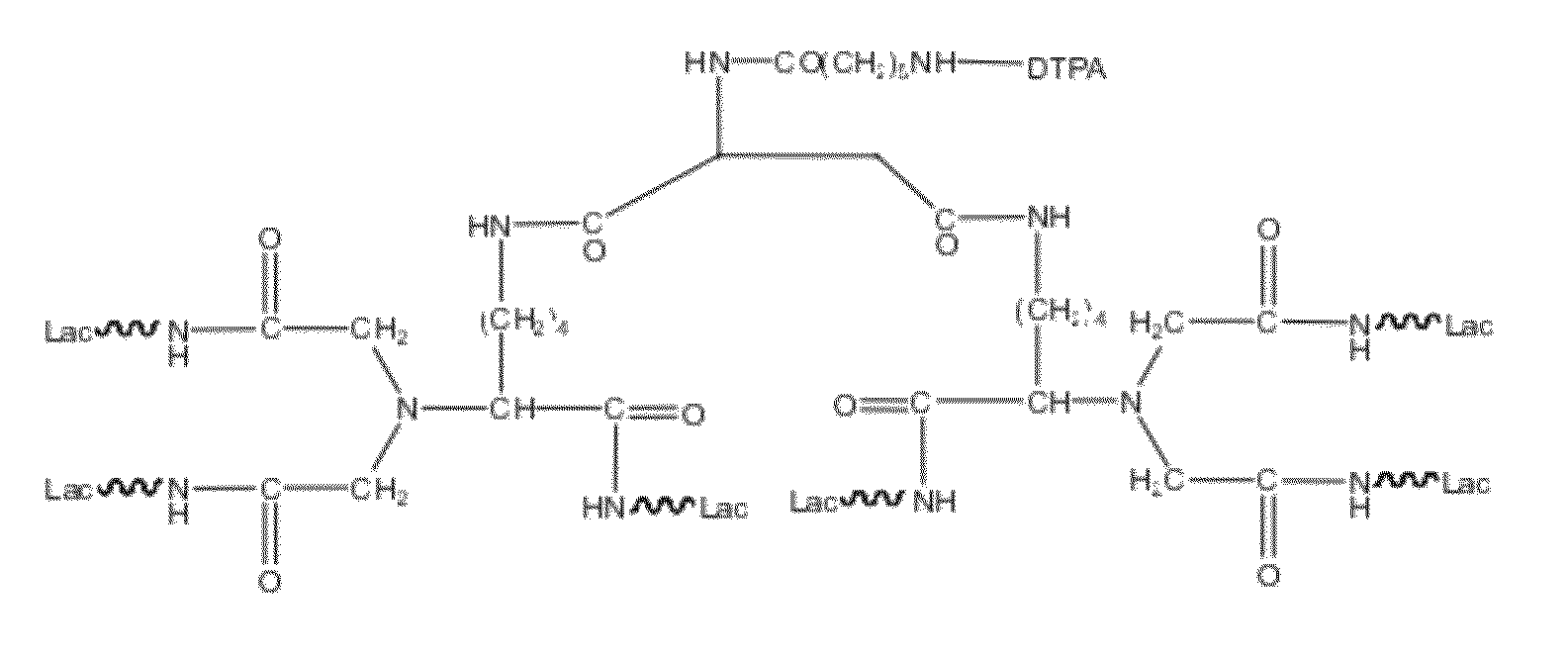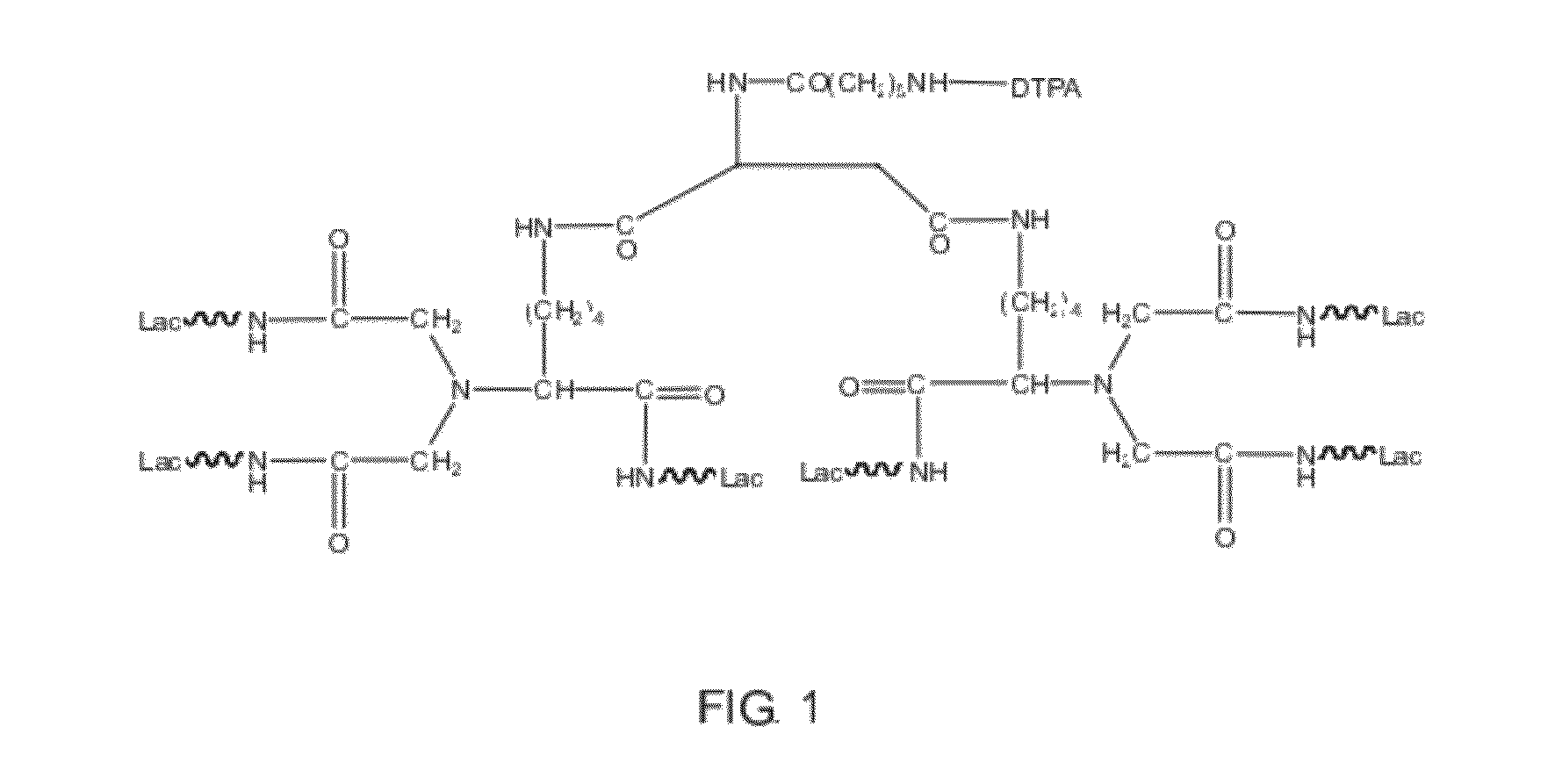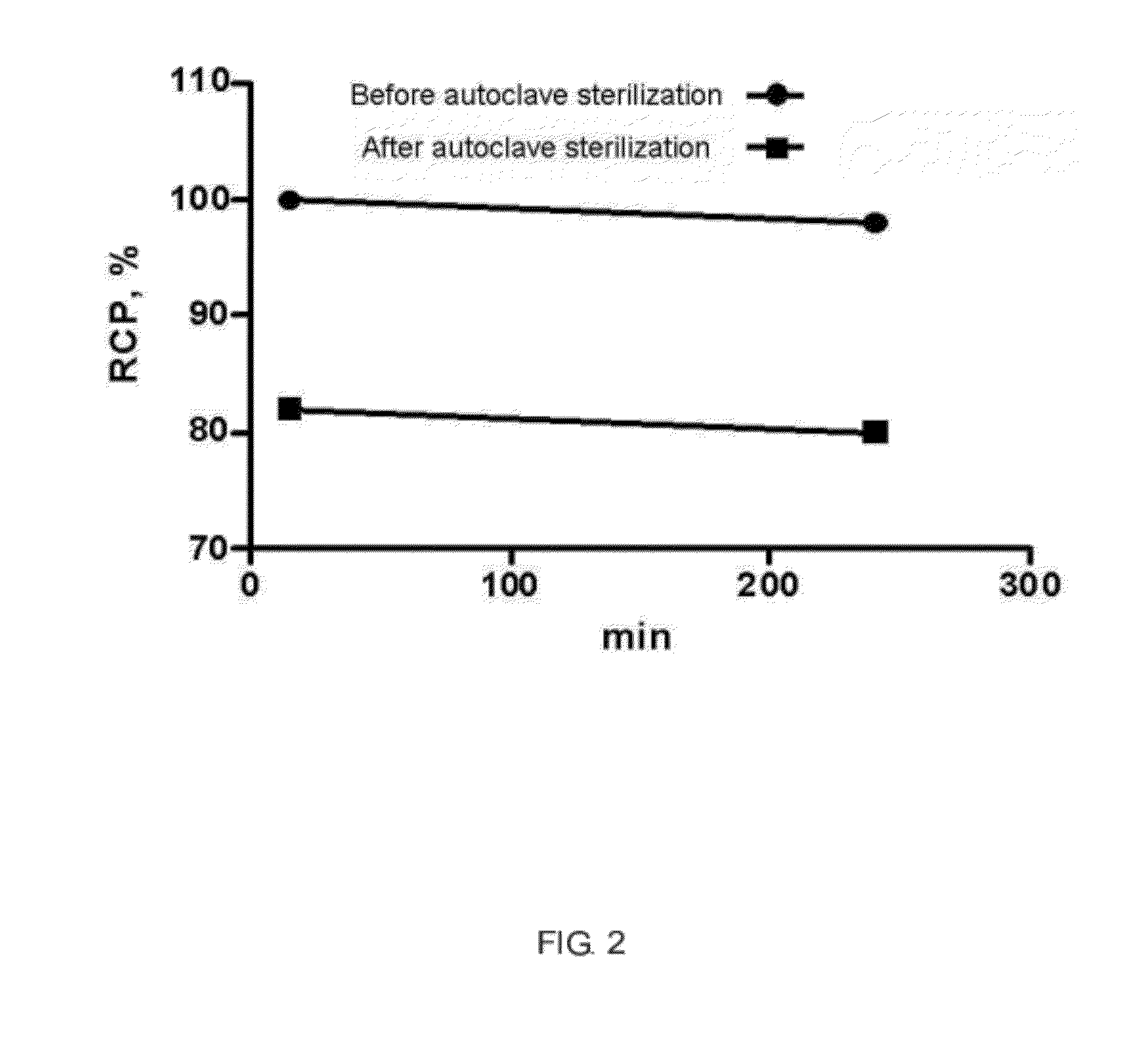Liver- receptor imaging injection, dispensing method and pharmaceutical composition thereof
a liver receptor and imaging injection technology, applied in the direction of drug compositions, group 3/13 element organic compounds, therapy, etc., can solve the problems of labeling yield reduction and instability after autoclave sterilization, and achieve the effect of low toxicity
- Summary
- Abstract
- Description
- Claims
- Application Information
AI Technical Summary
Benefits of technology
Problems solved by technology
Method used
Image
Examples
example 1
Design for New Liver Targeted Drugs
[0050]The major pharmaceutical structure of example 1 was illustrated in FIG. 1, in which E-benzyloxycarbonyl-α-dicarboxylmethyl-L-lysine (Z-DCM-Lys) was used as a basic structure to connect aminohexyl Lac (ah-Lac) so that three-chain lactose or three-chain galactosamine (triGaINAc) formed. Because of the much cheaper price, lactose had an advantage of cost down and thus became more competitive than galactosamine or galactose.
[0051]However, binding strength of lactose chains was weaker than that of galactosamine chains, thus if binding with lactose chains, aspartic acid or glutamic acid was bound to two molecules of three-chain lactose. That is, two-molecule ε-Z-α-DCM-Lys (ah-Lac)3 bound together with aminohexanoic aspartic acid (AHA-Asp) to form AHA-Asp[DCM-Lys(ah-Lac)3]2 (hexa-lactoside). Free amino residues of hexa-lactoside could react with DTPA anhydride in sodium carbonate solution to form DTPA derivatives of AHA-Asp[DCM-Lys(ah-Lac)3]2 (herei...
examples 2
Radiochemical Purity Before and after Autoclave Sterilization
[0052]To test whether 111In radiolabel of DTPA-hexa-lactoside was affected by autoclave sterilization, DTPA-hexa-lactoside was put into a lyophilized vial to set in an autoclave for sterilizing. After that, 111In radiolabel proceeded. The result demonstrated that radiochemical purity of 111In had an obvious decrease (<90%) after autoclave sterilization, showing that autoclave sterilization was unworkable for DTPA-hexa-lactoside. The comparison of radiochemical purity between before and after autoclave sterilization was illustrated in FIG. 2.
example 3
Preparation of ASGPR Imaging Agents in Lyophilized Dosage Forms
[0053]The process should operate in a sterile condition to ensure sterile quality of products. 0.08 mg DTPA-hexa lactoside, 55 mg citric acid, 62 mg trisodium citrate and 100 mg mannitol were weighed by an electronic analytical balance and poured into a 10 ml sealable react-vial. 15 ml water for injection was added into them to vortex until dissolved and nitrogen gas was incessantly introduced. The solution made from the foregoing step was filtrated with a 0.22 μm filtration film and then set separately into ten sterile and pyrogen-free vials, each of which had a volume of 10 ml. These vials were covered with an autoclaved long-legged rubber plug and pressed half of the depth to remain vent holes. These vials were rapidly moved to a freeze dryer. After drying for 18 hours, nitrogen gas was incessantly introduced and hydraulic button were controlled to press the rubber plug into the bottle mouth. After positioning the rub...
PUM
| Property | Measurement | Unit |
|---|---|---|
| Mass | aaaaa | aaaaa |
| Temperature | aaaaa | aaaaa |
| Composition | aaaaa | aaaaa |
Abstract
Description
Claims
Application Information
 Login to View More
Login to View More - R&D
- Intellectual Property
- Life Sciences
- Materials
- Tech Scout
- Unparalleled Data Quality
- Higher Quality Content
- 60% Fewer Hallucinations
Browse by: Latest US Patents, China's latest patents, Technical Efficacy Thesaurus, Application Domain, Technology Topic, Popular Technical Reports.
© 2025 PatSnap. All rights reserved.Legal|Privacy policy|Modern Slavery Act Transparency Statement|Sitemap|About US| Contact US: help@patsnap.com



